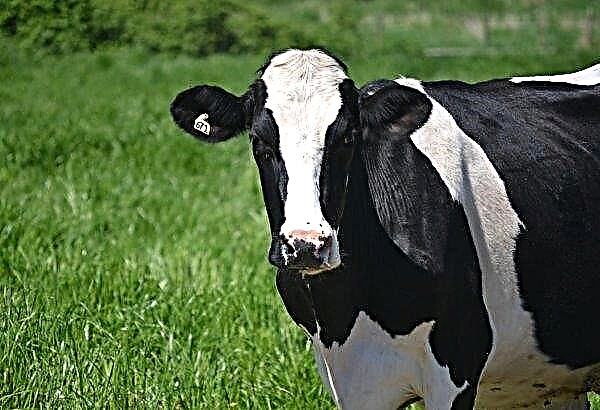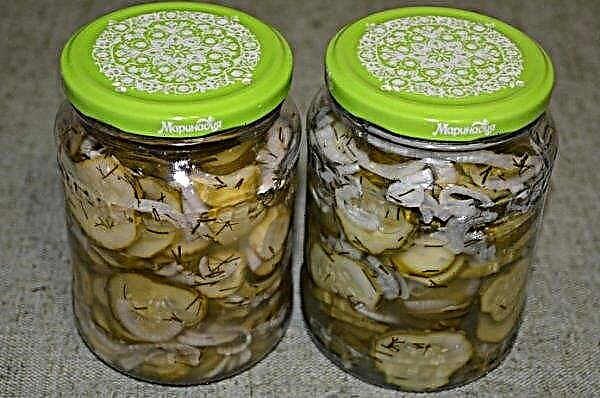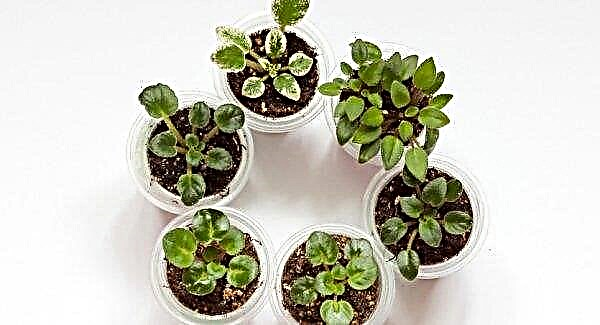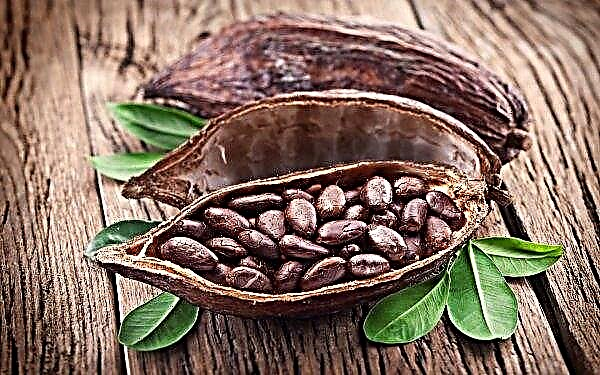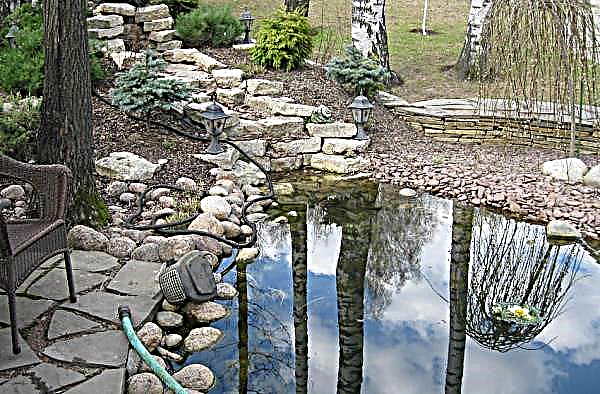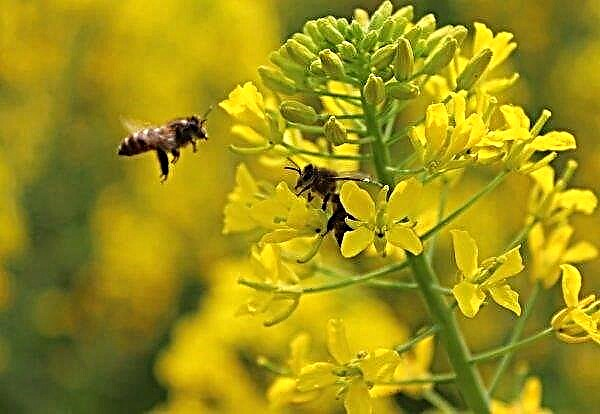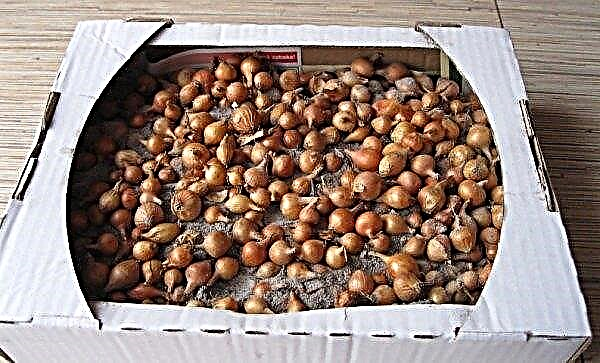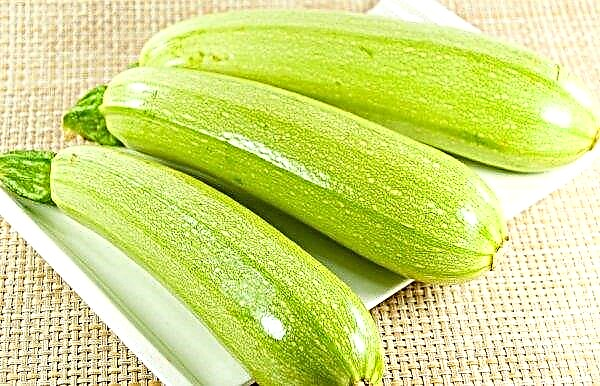When decorating their garden plot with coniferous plants, homeowners usually prefer junipers and other undersized species, considering that growing spruce or pine trees is a complex and troublesome task, and also requires a large space. In fact, if you choose the right variety, conifer can be perfectly entered even in a very limited landscape area, while caring for such a plant is much easier than it seems. An example of this is the very decorative Froburg spruce, which will be discussed below.
Grade description
Picea abies Frohburg is a species of common spruce. This generic affiliation determines both the basic external characteristics of the tree and the territorial boundaries of its cultivation.

The main feature in the description of the Froburg variety is the unusual shape of the crown: the branches of this tree grow downward from the trunk, giving the tree a “weeping” appearance. According to the outline of the silhouette, this can be compared with a bell or a fluffy skirt that extends downward, which practically spreads along the ground.
It is also important to note that we are talking about a rather small and compact tree: a ten-year-old, that is, a fully formed Froburg has a height of no more than 2 m (older specimens sometimes grow to 5 m, but this takes many decades) and the diameter at the base is approximately 1 m. Symmetrical, uniform and narrow crown is another characteristic feature of the variety.Important! The natural distribution area of Picea abies (Norway spruce) is the northeastern part of Europe, including the forest zone of Russia up to the beginning of the Black Earth Region.

The main botanical characteristics of Picea abies Frohburg are given in the table:
| Trunk | Single, straight, clearly expressed, grows vertically from the place of vaccination (unlike Picea abies Inversa - another variety of weeping Christmas tree), but without a pronounced apex. |
| Bark | Yellow-brown in color, smooth in young trees, cracking with age. |
| Shoots | Sagging and creating a semblance of a plume on the ground. |
| Needles | Bright green, evenly colored, shiny. Tough and short. Needle type. |
| Bumps | Red-green at a young age and brown-brown after complete maturation. Large, in the form of an elongated oval. Grow down from the shoots. |
| Root system | Powerful, well developed. In young seedlings, the core, in adult trees - superficial (the main root dies with age). |
| Growth rate | Very low. |

Landscape design application
The weeping form of the Froburg crown looks so unusual and spectacular that landscape designers usually try to emphasize it by placing the tree as a tapeworm (the term comes from the French "solitaire" or Latin "solitarius", that is, lonely, and means the absence of direct proximity to plants of other neighbors).
Did you know? The oldest living organism on Earth, whose age is almost 10 thousand years old is the ordinary spruce "Old Tjikko", growing in Sweden, Fulufjellet Park. True, this is not about a particular tree, but about gradually changing “clones” that grew at different periods from one root to replace a dying upper part.
In this case, you can tie the main trunk to the support, and let the growing long shoots freely spread along the ground, creating a very exotic coniferous “carpet” around the tree. This version of the formation of the crown is usually called "umbrella".
Sometimes such a Christmas tree is also included in group compositions, including such as an alpine hill, rockery, Japanese sekitei or heather garden, but in this case Froburg is clearly used as an accent, the main participant in such a corner in the landscape.
There is another form of planting of Froburg, which involves the creation of a group of weeping trees. Among such neighbors, the conifer always looks truly exclusive.
The compact size of Froburg makes it very convenient for decorating small areas of the territory. Moreover, even if the space is very limited, the tree can still find a suitable place. To do this, it is enough not to plant it in open ground, leaving it to grow in a container and, thus, getting the opportunity at its sole discretion to regulate the growth of spruce.
Landing
When deciding to land the Picea abies Frohburg, it is important to consider three basic rules:
- choosing a good place on the site;
- preparation of suitable soil composition;
- strict adherence to tree planting technology.

Seat selection
The location for Picea abies Frohburg must meet the following fundamental requirements:
| Lighting | Bright and uniform. In partial shade and, especially, the shadows of the tree grow too slowly and do not look so decorative. Even illumination is necessary to form a symmetrical crown. |
| Location | An open area (branches creeping on the ground need space), at the same time protected from the wind, especially from the north. |
| Distance to buildings and neighboring trees | At least 3 m, but it is better to maintain a greater distance in order to give the lower branches the opportunity to scenically spread along the ground. |
| Groundwater Depth | At least 1 m. Fir trees do not tolerate water stagnation and waterlogging of the soil. |
| Environmental friendliness | Froburg belongs to those varieties of spruce that grow very poorly in conditions of gas contamination and dustiness, therefore this tree is not suitable for sites located near megacities, industrial facilities or busy roads. |

Soil preparation
It would be wrong to say that Picea abies Frohburg places high demands on the composition of the soil, but nevertheless, for good growth and maximum decorativeness, the tree needs the substrate to:
- easy;
- Fresh
- fertile;
- acidic or slightly acidic;
- moist, but not waterlogged;
- not salted;
- well drained.

The best option for a Christmas tree of this variety is sandstone or loam. The tree will not grow on dense and heavy alumina. If the soil composition on the site does not meet the above criteria, a specially prepared substrate for coniferous plants should be added to the planting pit or the available land should be adjusted by adding peat and sand (up to 50%), as well as organic and mineral fertilizers.
Did you know? In the old days, coniferous wine was prepared from spruce needles. This drunken drink was especially appreciated by sailors, because it not only helped them while away long days in swimming, but also, thanks to the high content of vitamin C, served as an excellent prevention of scurvy.
Landing algorithm
If the spruce is purchased in a container, and its root system is closed by an earthen lump, planting, or rather transhipment of such a seedling into the open ground, can be carried out at any time of the year, even in winter (during the thaw) and in hot summers.
At the bottom of the pit, it is necessary to lay a drainage layer (gravel, broken brick or expanded clay) with a thickness of at least 15–20 cm, which should also be taken into account when determining the depth of the hole. As a rule, for a seedling of 3-4 years of age, this parameter ranges from 50 to 70 cm.
The dimensions of the pit are calculated so that its volume is at least twice as large as the dimensions of the root system of the seedling (container capacity). At the same time, it is important to keep in mind that after the pit is closed, the root neck of the spruce should remain at the level of the earth's surface - excessive deepening will lead to decay of the wood, and if it is too high, the roots, on the contrary, will dry out.
Progress:
- On top of the drainage layer you need to pour a little prepared fertile soil.
- Then carefully remove from the container and install the seedling in the pit.
- Add soil mixture to the sides of the earthen coma and carefully pack.
- When the pit is completely sealed, the spruce should be watered abundantly.
- Having waited until the water goes into the ground, it is necessary to mulch the near-stem circle with peat or other organic matter.

Care
Norway spruce Froburg is a relatively unpretentious tree, so caring for it is not very difficult. An exception may be a young seedling, which needs additional protection both from frost and direct sunlight (so that the needles do not turn yellow, the tree needs to be shaded).
Sometimes the tree is attacked by pests, in particular spruce aphids, moths, bagpipes, leafworms, sawflies, weevils, bark beetles. It is important to detect the problem in time, then it can be dealt with using alternative methods or biological products.Did you know? The resonant qualities of spruce wood have long been appreciated by manufacturers of musical instruments. The great Italian masters Stradivari and Amati performed the upper decks of their violins from this particular wood species.

The same rule applies to the main diseases of spruce - fusariosis, spider mites, brown shute, necrosis of the bark, various rot and rust. Other agro-technical methods of caring for Froburg spruce are standard - watering, top dressing, sanitary pruning.
Watering
Norway spruce - forest-forming plant. This means that under natural conditions, such a tree usually grows in dense plantations, where under the dense crowns the water in the soil lasts longer, and twilight provides a constant and fairly high humidity.
It is difficult to achieve such an effect on the garden plot, which is why the spruce trees often dry out and lose their decorative effect. To avoid this, you need to not only water the tree often enough (in the dry period - at least once a week using 1–1.5 buckets of water for each plant), but also regularly spray the needles.
After watering, the soil should always be loosened, but do this very carefully, since the root system of the tree is quite close to the surface. The optimal digging thickness is 5-6 cm.For mulching, it is best to use pine bark, pine needles (you can specially bring such a substrate from the forest) or, if such material could not be found - peat or sand. If the soil around the trunk is mulched, loosening is carried out several times during the season and is accompanied by the mulching of the mulch in the soil and the subsequent renewal of the covering layer.
If the soil around the trunk is mulched, loosening is carried out several times during the season and is accompanied by the mulching of the mulch in the soil and the subsequent renewal of the covering layer.
Top dressing
The spruce does not need frequent dressing - it is enough to make a complex fertilizer for coniferous plants twice a season. They can be purchased in specialized stores, for example, under such trademarks as:
- "Clear sheet";
- “New biotechnologies”;
- "Gilea";
- "Master";
- "Dzherelo";
- "Agronomist Profi";
- "Vila";
- "Agrecol";
- Brexil
- "Biopon" and many others other

Organic fertilizers are provided by the gradual decay of mulch. To accelerate this process, special stimulants, for example, humic acids (humates) can be introduced into the soil.
In addition to root dressing, fertilizer must also be applied during the spraying process. There are also special compounds for this, for example, “Magnificent needles”, “Fertis”, “Ferrilen”, “Helatin” and others. Such preparations usually contain iron chelate, due to which the fir-tree needles acquire a saturated green color and a healthy shine.Important! The main principle in the preparation of complex mineral fertilizers for conifers is the minimum nitrogen content and the presence of magnesium in a special, easily digestible form by the plant.

Sanitary pruning
Forming pruning is not needed for firs; moreover, this type of tree as a whole is difficult to tolerate cutting and poorly restored after such a procedure. Therefore, it is necessary to remove only diseased, dried and damaged branches (sanitary pruning).
Unlike most fruit trees that are sheared at the end of winter or late autumn, the line between spring and summer is considered optimal for evergreens — the period when vegetative processes are in an active stage, but the first spring “spurt” of growth is already over.
Shelter for the winter
Like all representatives of common spruce, the Froburg variety has a high degree of winter and frost resistance. Lowering the temperature to -35 ° C the tree tolerates absolutely normal, which allows it to be assigned to the 4th USDA zone. Therefore, if the climatic conditions for planting spruce are chosen correctly, Froburg does not need additional protection for the winter.
To a greater extent than severe frosts, a Christmas tree, especially a young one, can suffer from return frosts in spring, when, after warming, which provoked the onset of sap flow, the temperature again drops sharply.
Important! During hibernation, when the vegetation processes in the plant tissues are slowed down, severe frosts are not scary for the tree, but after awakening frostbite can even cause a relatively slight cooling.
It is this reason that explains the paradoxical situation in which the same species of trees planted in warmer regions tolerate winter worse than their "relatives" growing to the north, where frosts recede much later.
In order to protect seedlings from such a danger, it is in those areas that are characterized by unexpected thaws at the end of winter and early spring, it is advisable to cover young trees from autumn with burlap, white agrotechnical fiber or other breathable material. It is fundamentally important that it be bright, otherwise in the sun the bark under the shelter may begin to rot.
The area of the trunk circle to fix the protection can be covered with lapnik. In the spring, it will additionally serve to retain moisture in the soil and, in addition, gradually decaying, enriching it with organic matter useful and natural for conifers.
Spruce on the site always looks very beautiful, but Froburg is a special Christmas tree. Unusualness is given to the tree by falling down branches and the absence of a pronounced top, due to which it is most similar in shape to a weeping willow. The small size and relatively simple care allow you to grow such an evergreen tree in almost any area that has long been appreciated by specialists in landscape design.


